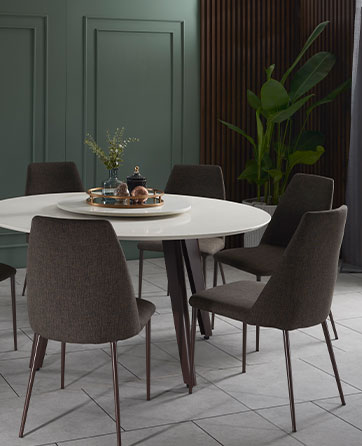Trendy Korean Interior Design Ideas
House Inspiration: Korean Interior Design to Mimic
There is no denying that K-pop has become a global phenomenon. Possibly the main reason behind the Korean wave, or Hallyu, K-pop has become a channel for Korean culture to seep its way into our everyday lives. From Korean dramas trending on Netflix to thousands preaching about Korean skincare products, it comes as no surprise that the culture has influenced interior design too. Subtly causing a shift in the way new homeowners are designing their humble abodes, we study the fundamentals of Korean interior design so that you can build your dream Korean house here in tropical Singapore.
Like in Malaysia, apartments in Korea do not offer much floor space. This explains the trademark style of packing multiple elements into a limited space, only to create an unexpectedly serene and tranquil home. If you are a fan of K-dramas, you might have noticed the minimalistic approach taken on by Korean homeowners when designing their houses. Modest and practical, their interior appeals to the universally appealing contemporary aesthetics and design ideas. Advocates of the less is more concept, refined decorative tastes, and open spaces, it is an easy design theme to pull off if your home is designed with a single purpose in mind – a comfortable space to live in. So what are the things you can consider when redesigning your home? We cover them in this blog.
1. Minimalistic Interior Design: Neutral Tones
When choosing the colour scheme to work with throughout your entire home, go for neutral tones like white, beige, ivory, and taupe. Neutral hues, when used in the background of areas like your living room, not only adds comfort but also allows for versatility in the elements placed in the foreground – think furniture choices. Whether you are looking to elevate the space with minimalistic décor or layer it with other colours, patterns, and designs, neutral tones give you space for experimentation. Regardless of its undertones, mixing and matching decorative elements becomes relatively easy.
2. Minimalistic Interior Design: Versatility

Luceo L-Shaped Fabric Sofa with Wooden Storage Arm
In a Korean house interior, simplicity translates to versatility. Think of maintaining your home as a blank canvas – you should be able to add and remove furniture, colour, and home décor without much hassle. Why inculcate such a practice? Because in small spaces, emphasis on simplicity forces designers and homeowners to concentrate on the space available to them and work with it, rather than around it.
Elda L-Shape Fabric Sofa with Wooden Storage Arm
3. Living Room Ideas: Natural Materials

Paying homage to nature, many homeowners integrate natural materials like wood and bamboo in their homes to bring the outdoors in. Similarly, in Korean interiors, wood furniture like wood coffee tables, wooden bed frames, and dining tables are introduced subtly. When such natural materials are paired with neutral tones, a cosy, homey vibe is created. Besides wood, stones like quartz bring in a natural touch with a twist of urban modernity.
4. Modern Bedroom Design: Elevated Plinth
When it comes to the design of the master bedroom, floor movement is pivotal. To facilitate space for easy leg movement, an elevated “stage” is usually installed to hold the mattress instead of a bulky bed frame. This is a creative solution for small homes with limited space that tend to lack distinct indicators of separation. Whether you are attempting to squeeze a large queen size mattress or give in to space constraints with a single mattress size, certain bulky bedroom furniture could take away from the calming atmosphere. A plinth acts as a comfort design furniture, defining the space while serving a functional purpose.
5. Master Bedroom Design: The Wayu
Wayu, is known as “laying down and sightseeing” in Korean. Be it in the form of a ceiling to ground windows or punctuated walls with portholes, this is another way of bringing the outdoors in. When the concept of Wayu is integrated into the master bedroom design, the idea is to allow homeowners to look out into nature and enjoy the view when they are unable to go out.







